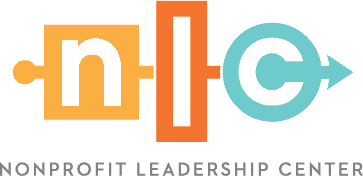We all know a coworker who is consistently late for meetings, a colleague who takes days to respond to emails or the team member who has a negative response for everything. Bad work habits aren’t just common; they’re harmful to every nonprofit or business. But breaking bad habits at work is possible, and it will lead to increased efficiency and effectiveness.
One of the reasons breaking bad habits is so hard is because habits often happen subconsciously. According to researchers at Duke University, habits account for about 40% of our behaviors on any given day. Only when we make a conscious decision to do something differently — and commit to doing it differently — will things change. The best way to stop bad habits is to consciously work to develop new ones.
4 Ways to Break Bad Work Habits
Here are four tips for breaking bad habits in the workplace.
1. Use paper clips to take control of your daily goals.
Yes, you heard that correctly. Here’s how it works: Need to reach out to 20 donors every day? Start by placing 20 paper clips on your desk. Toss one into a drawer each time you send a donor email, make a call or mail a hand-written note continuing to cultivate the relationship. Want to read 10 articles every day to stay informed on the latest news and data on philanthropy and changing donor expectations? Start with 10 paper clips on your desk. Drop one into a cup each time you finish an article. This tactic works for any daily goal you need to accomplish with any number of paperclips.
Why does it work? You’re two to three times more likely to follow through with a habit if you make a specific plan for when, where and how you’re going to implement it. Using paperclips as visual cues, you can set daily goals and work to achieve them, breaking bad habits at work, such as disorganization or lack of focus.
2. Stop procrastinating.
What are the daily tasks you often avoid until the last minute? Perhaps it’s replying to emails, working on your budget, writing a blog post or doing employee reviews. Whatever you’re most likely to procrastinate doing is what you should get done first. To make it happen, follow these steps:
- Identify a block of time to accomplish the tasks.
- Schedule the tasks on your calendar, treating them just as you would an appointment with your top donors or funders.
- Reward yourself when the task is complete.
3. Master your daily calendar.
Sometimes breaking bad habits at works starts with understanding what they are in the first place. Track how you spend your time at work for one week. Identify items that eat up your time by “popping up” throughout the day, and develop and commit to a system to effectively prioritize your workload.
- If you realize that keeping up with notifications, social media and/or responding to “quick” emails eats up two hours each day, batch these tasks together and block off time, so you’re not checking them all day long. Perhaps use the first 10 minutes at the top of each hour or several specific times during the day to attend to these activities.
- Identify three to four hours a week to block off on your calendar as personal Focused Work Time — for instance, 10 a.m. to 11:30 a.m. on Tuesdays and Thursdays. Let others know that you prefer not to be interrupted during these times, shut off notifications and send calls to voicemail.
- Instead of creating a “to-do list,” create a “to-do schedule.” When adding something to your workload, don’t just add it to your list, find a time to schedule it into your day.
4. Support your success.
Breaking bad habits in the workplace and establishing better ones takes time and commitment. Here are some final tips to help ensure you create lasting behavior change.
- Commit to 30 days. Experts tell us it takes a minimum of three weeks to establish a new habit. Once you get over the initial hump, it will be a little easier to sustain.
- Set reminders. Don’t depend on your yet-to-be trained memory. After the first few days, you are more likely to fall back into what’s comfortable. Set calendar reminders, your phone alarm or other prompts to help you remember to follow through with your new habit.
- Find an accountability partner. Ask someone you trust and will listen to, to help keep you on track. Set up times to check in with him or her, so you’re sure to be successful.
Automating behaviors in the form of habits is one of the best ways for your brain to conserve energy. You don’t have to expend effort when prompted to do things by your subconscious. Creating healthy, positive habits and learning to break bad habits at work will free up your brain to handle more complex, creative and innovative tasks.
Better Habits Start Here
If you want to improve your leadership skills and habits to strengthen your nonprofit organization and community, register for an upcoming nonprofit training event at the Nonprofit Leadership Center. From leadership, volunteer management and grant writing to finance and organizational culture, we’ve got the personal and professional development support to help you succeed and accelerate your mission.


